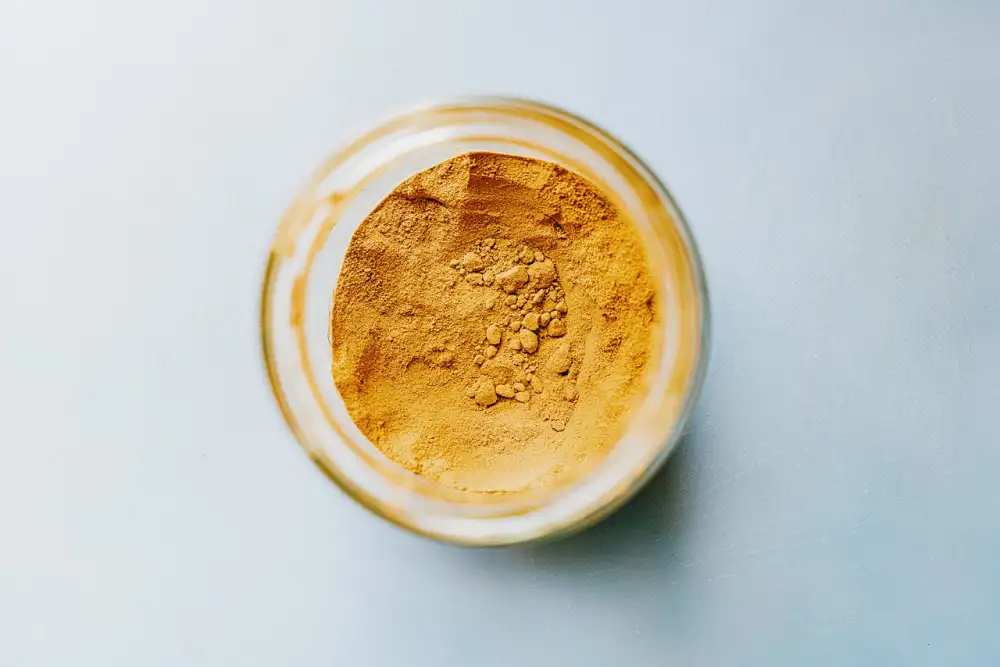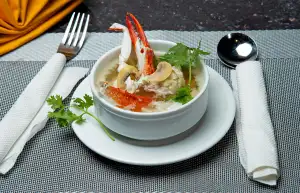Spice up your Kitchen with our Authentic Thai Red Curry Recipe: A Burst of Flavors and Aromas!

Thai cuisine is known for its bold flavors and aromatic spices, and one dish that perfectly embodies these qualities is the Thai Red Curry. Originating from Thailand, this curry is a harmonious blend of fiery red chilies, fragrant herbs, and creamy coconut milk. It is a true explosion of flavors that will transport your taste buds to the vibrant streets of Thailand. Whether you're a spice lover or simply looking to add some excitement to your kitchen, our authentic Thai Red Curry recipe is guaranteed to satisfy your cravings and leave you wanting more. Get ready to embark on a culinary adventure like no other!
Ingredients for Thai Red Curry
To create the authentic and flavorful Thai Red Curry, you will need the following ingredients:
1. Red Curry Paste: This is the heart of the dish and gives it its vibrant red color and spicy flavor. You can either make your own paste using ingredients like red chilies, garlic, lemongrass, ginger, and shrimp paste, or purchase a pre-made paste from your local Asian grocery store.
2. Protein: Choose your preferred protein to add substance to the curry. Common options include chicken, beef, shrimp, tofu, or mixed vegetables for a vegetarian version.
3. Coconut Milk: This creamy ingredient adds richness and balances out the spiciness of the curry paste. Opt for full-fat coconut milk for a luscious texture.
4. Vegetables: Enhance the nutritional value of your curry by adding an assortment of colorful vegetables such as bell peppers, bamboo shoots, eggplant, green beans, or baby corn.
5. Fish Sauce: A staple in Thai cuisine, fish sauce brings a savory umami flavor to the curry. Use it sparingly as it can be quite potent.
6. Palm Sugar: This natural sweetener helps balance out the heat and adds depth to the overall taste of the curry. If palm sugar is not readily available, you can substitute it with brown sugar or honey.
7. Kaffir Lime Leaves: These aromatic leaves impart a distinct citrusy fragrance to the curry. Tear them into smaller pieces before adding them to release their flavors.
8. Thai Basil Leaves: Adding these fresh basil leaves towards the end of cooking infuses a delightful aroma into the dish.
Remember that these are just basic ingredients; feel free to experiment and add other herbs or spices according to your preference!
Step-by-step Instructions for Making Thai Red Curry
1. Start by preparing the curry paste. In a blender, combine 4-6 red chili peppers (adjust according to your spice preference), 3 cloves of garlic, 2 shallots, 1 lemongrass stalk (white part only), 1 thumb-sized piece of galangal or ginger, 1 tablespoon of shrimp paste (optional), and a pinch of salt. Blend until smooth.
2. Heat a large pan or wok over medium heat and add 2 tablespoons of vegetable oil. Once hot, add the curry paste and cook for about 2 minutes until fragrant.
3. Add your choice of protein such as chicken, beef, shrimp, or tofu to the pan and stir-fry for a few minutes until lightly browned.
4. Pour in one can of coconut milk and bring it to a gentle simmer. Let it cook for about 5 minutes to allow the flavors to meld together.
5. Add your choice of vegetables such as bell peppers, bamboo shoots, baby corn, or eggplant to the pan and cook for another 5-7 minutes until they are tender-crisp.
6. Season with fish sauce (or soy sauce for a vegetarian option) and palm sugar (or brown sugar) to balance the flavors. Taste and adjust seasoning if needed.
7. Lastly, garnish with fresh Thai basil leaves and sliced red chili peppers for an extra burst of flavor and color.
8. Serve hot with steamed jasmine rice or noodles on the side.
With these simple steps, you can create an authentic Thai Red Curry bursting with flavors and aromas right in your own kitchen!
Tips and Tricks for Perfecting Thai Red Curry
1. Use fresh ingredients: To achieve the authentic flavors of Thai red curry, it is essential to use fresh ingredients such as lemongrass, galangal, and kaffir lime leaves. Avoid using dried or powdered substitutes as they may not provide the same depth of flavor.
2. Balance the flavors: Thai red curry is known for its perfect balance of sweet, spicy, salty, and sour flavors. Adjust the amount of chili paste, fish sauce, sugar, and lime juice according to your taste preferences. Remember to taste and adjust as you go along.
3. Toast the spices: Before adding them to your curry paste, toast the dry spices like coriander seeds and cumin seeds in a dry pan over medium heat. This will enhance their aroma and add an extra layer of complexity to your curry.
4. Don't overcook the vegetables: To maintain their vibrant colors and crispness, be careful not to overcook the vegetables in your Thai red curry. Add them towards the end of cooking time and cook just until they are tender-crisp.
5. Let it simmer: Allow your Thai red curry to simmer gently for at least 15-20 minutes after adding the coconut milk. This will help all the flavors meld together beautifully and result in a rich and flavorful curry.
6. Use homemade curry paste: While store-bought curry pastes can be convenient, making your own from scratch will give you more control over the flavors and ensure a truly authentic taste.
By following these tips and tricks, you can perfect your Thai red curry recipe and impress your family and friends with its delicious flavors and aromas!
Variations and Additions to Thai Red Curry
While the traditional Thai Red Curry recipe is already bursting with flavors, there are several variations and additions you can make to customize it according to your taste preferences. Here are a few ideas:
1. Protein options: Instead of chicken, you can use shrimp, beef, pork, or tofu as the main protein in your curry. Each protein will bring its own unique flavor and texture to the dish.
2. Vegetable choices: Feel free to experiment with different vegetables in your curry. Some popular options include bell peppers, bamboo shoots, baby corn, mushrooms, and eggplant. These vegetables not only add color but also enhance the nutritional value of the dish.
3. Heat level: Adjust the spiciness of your curry by adding more or less red curry paste or Thai chilies. If you prefer a milder version, remove the seeds from the chilies before adding them.
4. Coconut milk variations: For a creamier texture, use full-fat coconut milk instead of light coconut milk. You can also substitute coconut milk with coconut cream for an even richer flavor.
5. Fresh herbs and spices: Enhance the aroma of your Thai Red Curry by adding fresh herbs like basil, cilantro, or kaffir lime leaves at the end of cooking. Additionally, spices like cumin or coriander powder can be sprinkled for an extra depth of flavor.
Remember that these variations are just suggestions; feel free to get creative and add your own twist to this classic recipe! The key is to balance all the flavors harmoniously while keeping true to the essence of Thai cuisine.
By exploring these variations and additions, you can create a Thai Red Curry that perfectly suits your taste buds and culinary preferences. So go ahead and let your imagination run wild in the kitchen!
Stay tuned for more exciting recipes in our magazine "Recipe Fusion: Where Tradition Meets Modernity in Food".
Serving Suggestions for Thai Red Curry
Thai Red Curry is a versatile dish that can be enjoyed in various ways. Here are some serving suggestions to enhance your culinary experience:
1. Jasmine Rice: Serve Thai Red Curry with fragrant jasmine rice to soak up the rich and spicy flavors of the curry. The fluffy texture of the rice complements the creamy curry perfectly.
2. Noodles: For a twist, serve Thai Red Curry with rice noodles or egg noodles. The combination of tender noodles and flavorful curry creates a delightful fusion of textures.
3. Fresh Herbs: Garnish your Thai Red Curry with fresh herbs like cilantro, basil, or mint. These aromatic herbs add a refreshing touch and balance out the heat of the curry.
4. Lime Wedges: Squeeze some lime juice over your curry to add a tangy kick and brighten up the flavors even more. The citrusy acidity cuts through the richness of the curry, creating a harmonious balance.
5. Condiments: Offer condiments like sliced red chili peppers, fish sauce, or soy sauce on the side for those who prefer an extra kick or want to customize their spice level.
6. Side Dishes: Accompany your Thai Red Curry with traditional Thai side dishes such as spring rolls, papaya salad, or cucumber relish. These additions provide contrasting flavors and textures that complement the curry beautifully.
Remember, presentation is key! Serve your Thai Red Curry in vibrant bowls or on decorative plates to enhance its visual appeal and make it even more appetizing.
Whether you choose to enjoy it with rice, noodles, or alongside other dishes, Thai Red Curry is sure to satisfy your cravings for bold flavors and aromatic spices. So gather your loved ones around the table and indulge in this delicious culinary adventure!
In conclusion, Thai Red Curry is a dish that will surely spice up your kitchen and tantalize your taste buds. With its combination of bold flavors and aromatic spices, it is a true delight for any food lover. Whether you prefer it mild or extra spicy, this authentic recipe allows you to customize the heat level according to your preference. So gather your ingredients, follow the step-by-step instructions, and get ready to indulge in a burst of flavors and aromas with our Thai Red Curry recipe. Enjoy!
Published: 27. 11. 2023
Category: Food



